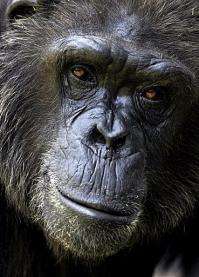Upping the ant-e: Clever chimps boost termite catch

Chimpanzees not only use a tool to snare termites but are able to modify it as well, a skill that requires conceptual and cultural skills, scientists said on Wednesday.
Zoologists have long known that chimps eager for a tasty termite snack use a short stick, which is thrust into the termites' nest. The insects bite on the intruding probe and are then extracted and slurped down.
In a study published by Britain's Royal Society, a trio of scientists from Germany, the United States and the Republic of Congo describe how some chimpanzees have learned to go one better.
Apes in the Goualougo Triangle, a lowland forest in the Nouabale-Ndoki National Park the Republic of Congo, have learnt how to modify termite-fishing tools to get a better catch.
The team set up video cameras with passive infrared sensors to record how the chimps behaved at termite nests.
The apes, they found, manufactured special "brush sticks" in the knowledge that more termites would hook onto this form of the probe.
The sticks are made from the stems of arrowroot plants, which are picked by the chimps and defoliated. The apes then use their teeth to split the end of the stem and fray the fibres, forming a tip that looks rather like an artist's paintbrush.
More than 80 percent of tools recovered from termite nests in six chimpanzee communities in the Goualougo Triangle have been engineered to give a brush tip, according to the paper.
"Brush sticks" have also been found at other chimp sites in central Africa but, interestingly, chimpanzees in eastern Africa actively remove frayed ends.
Perhaps those chimps should learn the trick. For the zoologists tested the brush stick and the unmodified stick for themselves and were surprised by the difference in effectiveness.
The brush stick was four times more likely to result in a catch, and the average haul was 4.9 termites compared with 0.27 termites with the unmodified stick.
The findings are important, says the study. It seems that chimpanzees, like humans, are able to conceptualise what they want to do -- and tool making is a cultural achievement, learnt or copied from others, and not something innate.
"Our results indicate that chimpanzees have a mental template of the tool form, which is employed in crafting the tool prior to use and refining it during use," says the study.
The paper, appearing in the journal Biology Letters, is headed by Josep Call of the Max Planck Institute for Evolutionary Anthropology in Leipzig, eastern Germany.
(c) 2009 AFP




















